The **Red-winged Blackbird** (*Agelaius phoeniceus*) is one of the most common and widespread bird species in North America, often seen perched on cattails, shrubs, or fences in wetlands, marshes, and open fields. The males are easily recognizable with their glossy black feathers and striking red and yellow shoulder patches, or epaulets. Females, on the other hand, are brown and streaked, blending into their surroundings. This species is known for its loud, distinctive song, a gurgling “conk-la-ree,” which males use to defend their territory and attract mates.

During the breeding season, male Red-winged Blackbirds can be quite aggressive in protecting their nesting areas, often chasing away much larger birds like hawks or even humans if they come too close. They are highly polygynous, meaning a single male may mate with multiple females in his territory. The female builds the nest, typically in dense vegetation near water, and lays 3 to 5 eggs. She incubates the eggs and cares for the young once they hatch, while the male focuses on defending the territory.
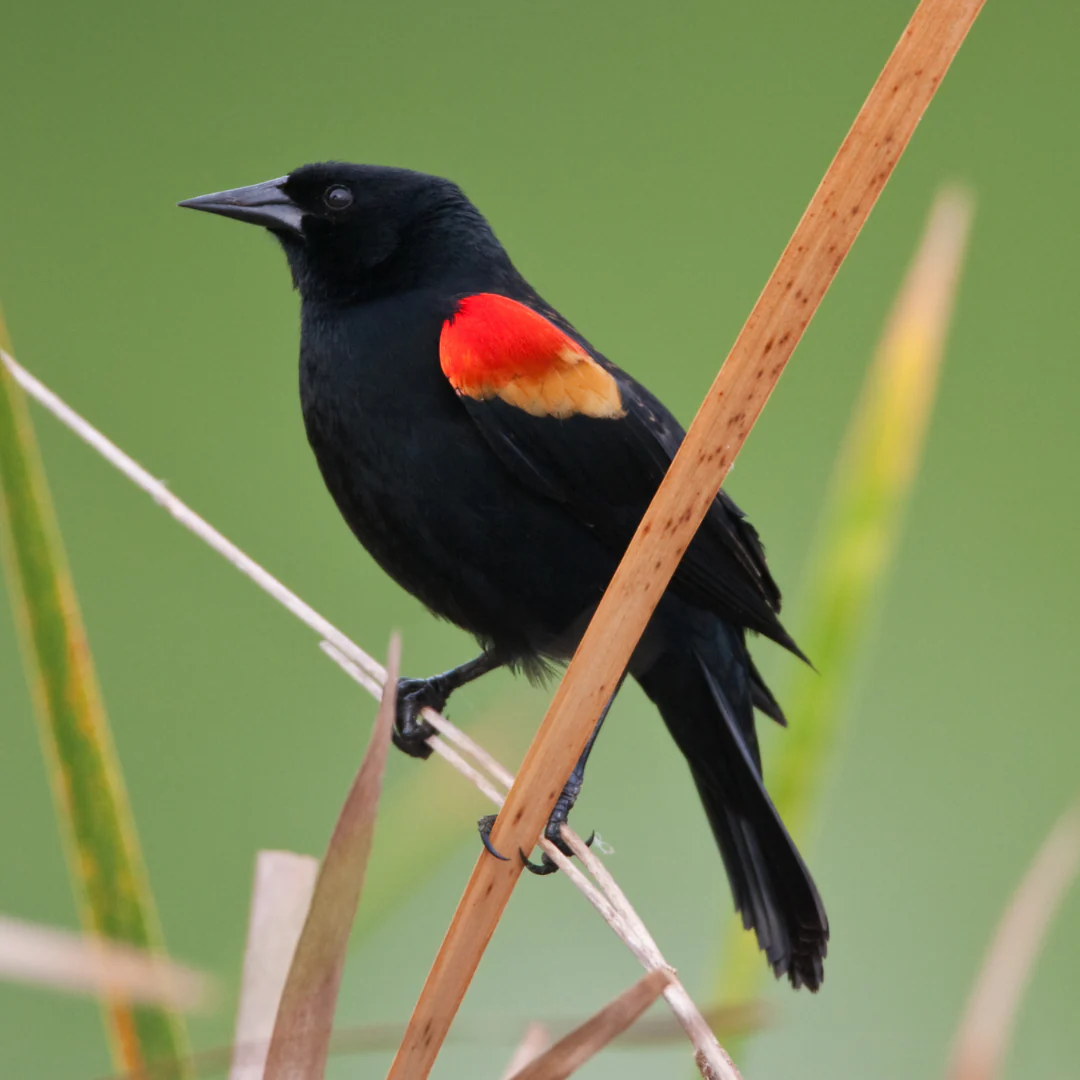
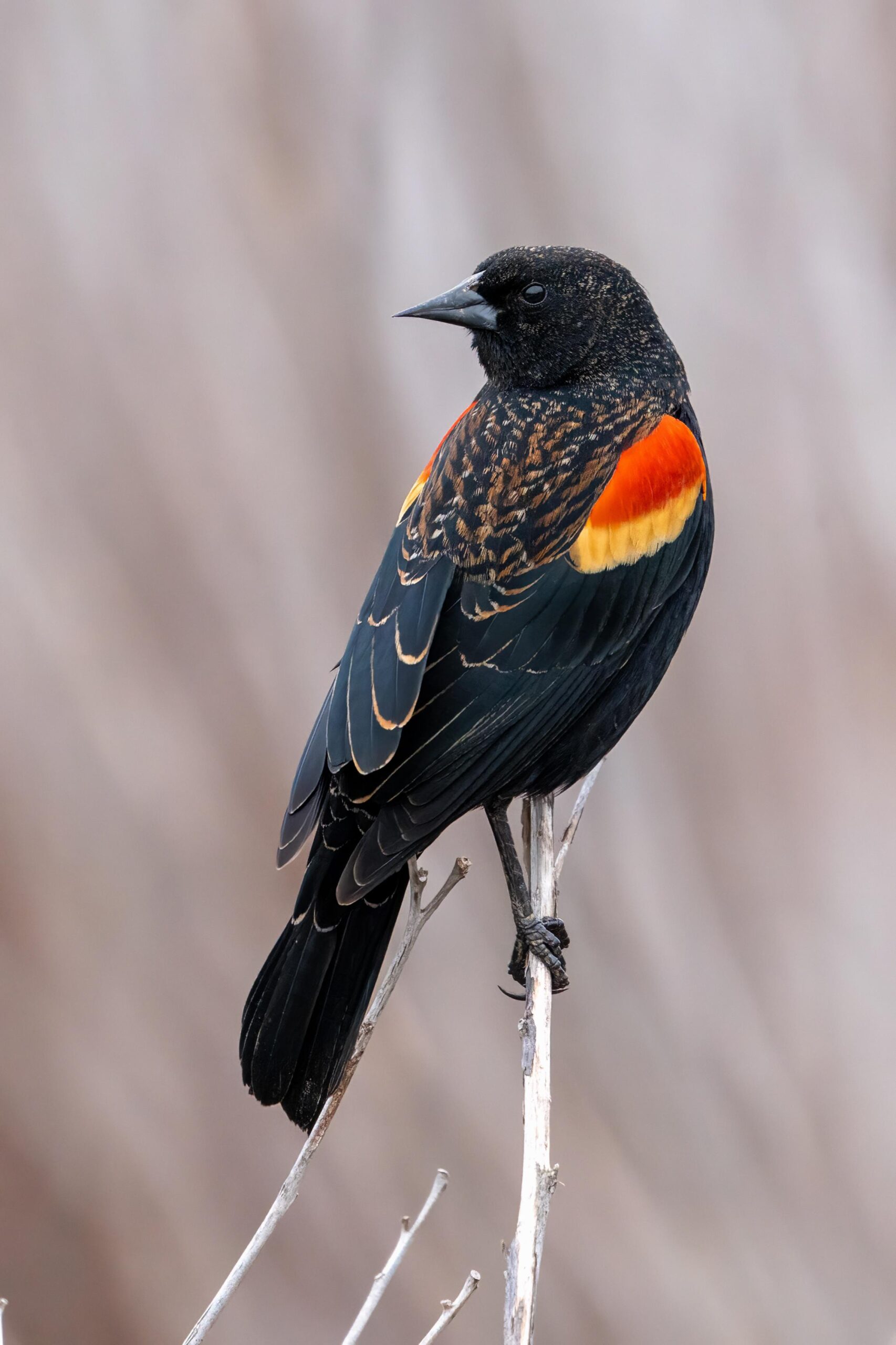
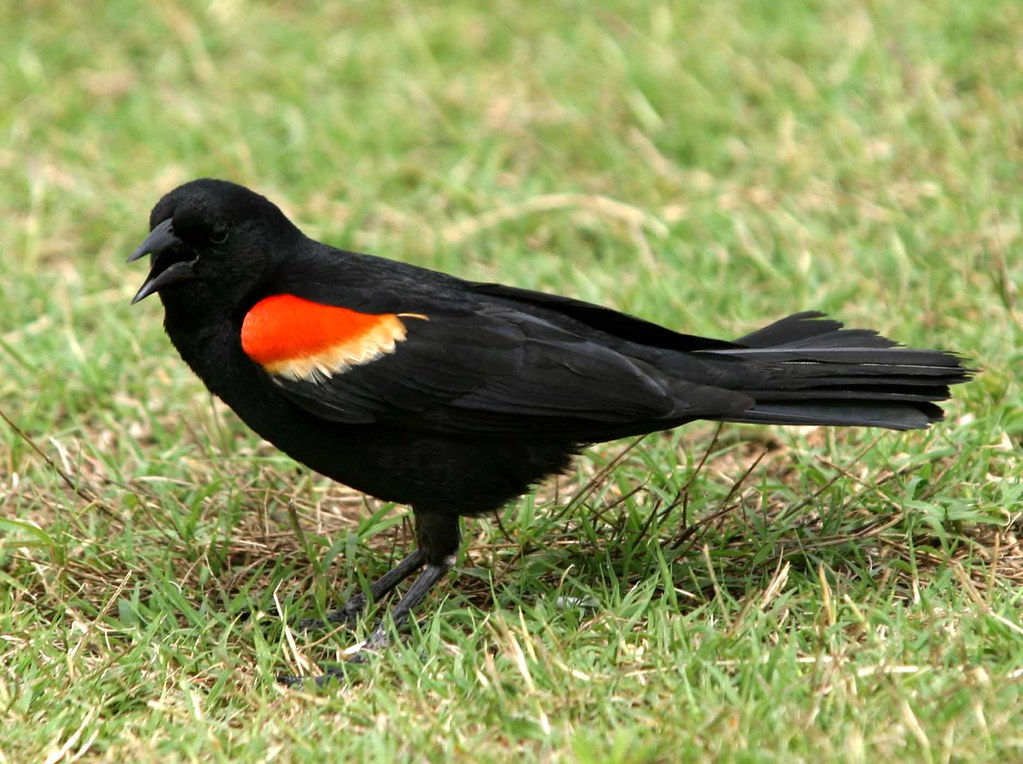
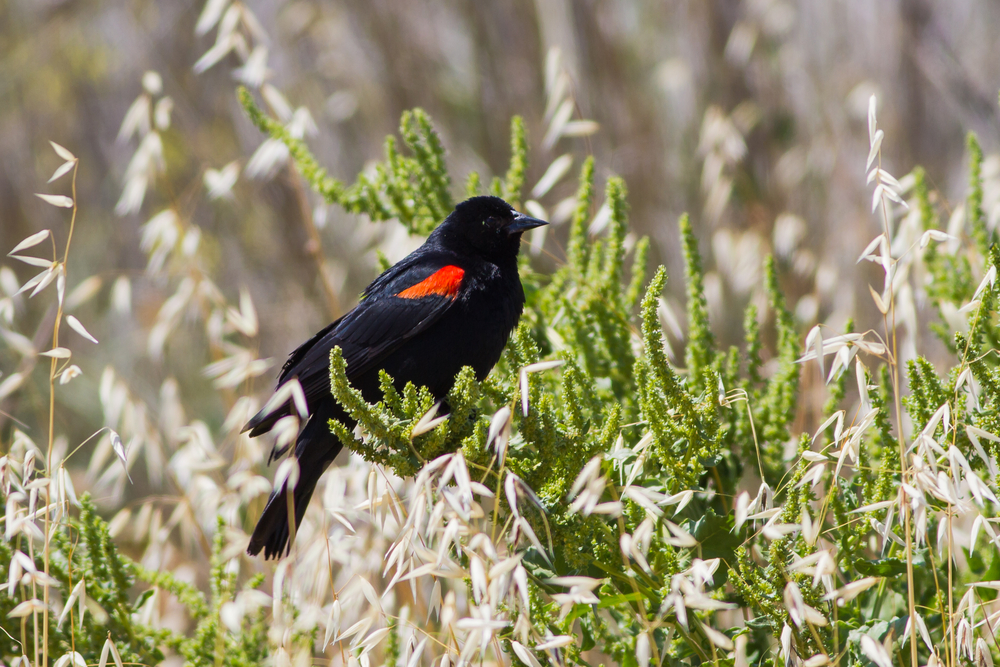
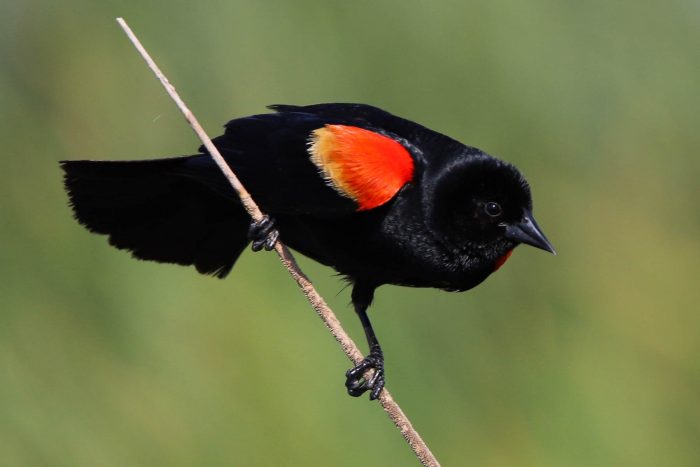
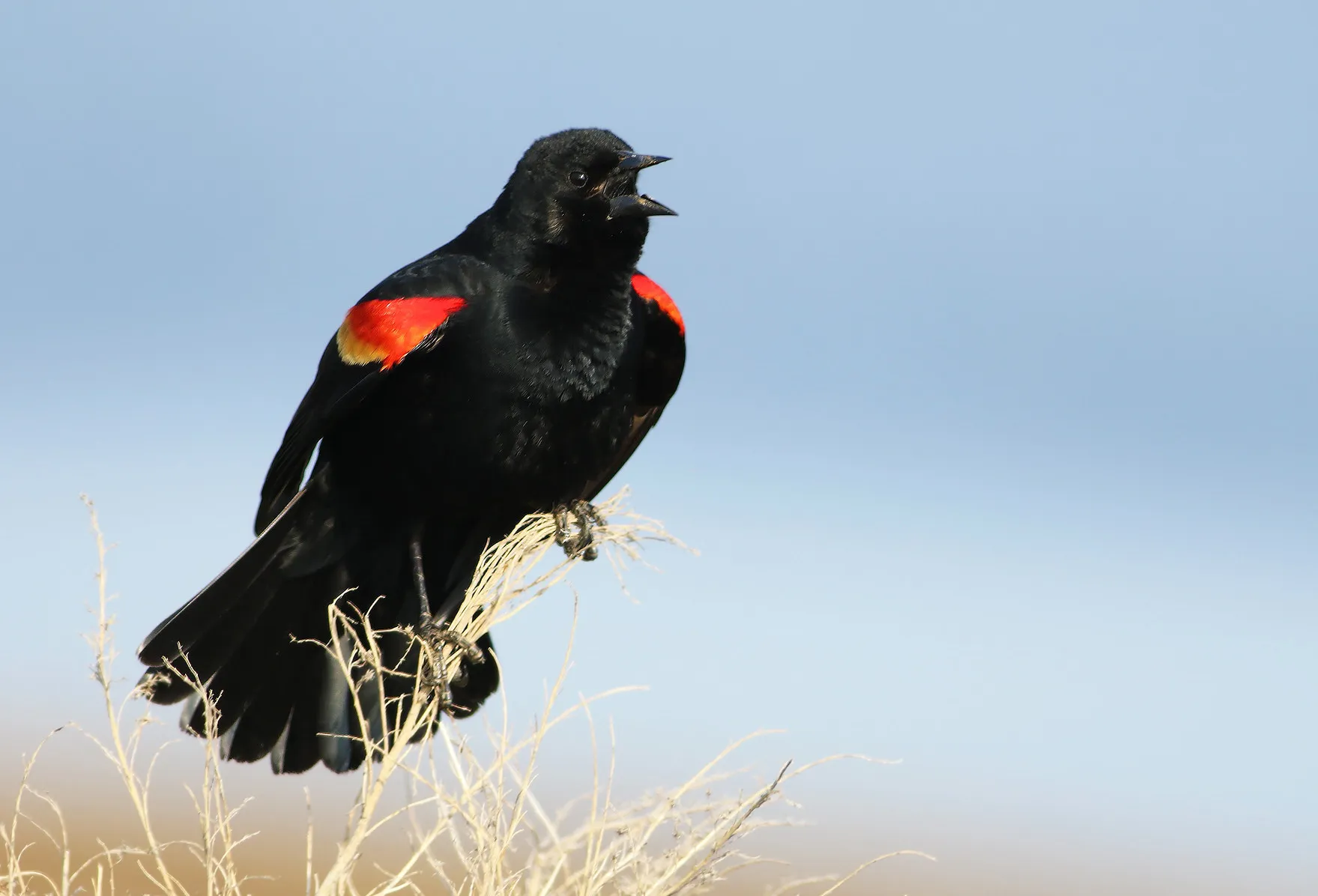
Red-winged Blackbirds are highly adaptable and opportunistic feeders. Their diet varies throughout the year, consisting of insects, seeds, and grains during the warmer months and more plant material in the winter. They often form large flocks, especially outside of the breeding season, and can be seen foraging in open fields or agricultural lands. These birds play an important role in controlling insect populations but can also be considered pests by farmers due to their grain-eating habits.